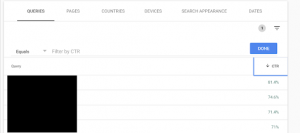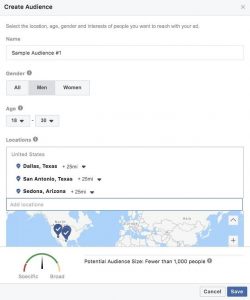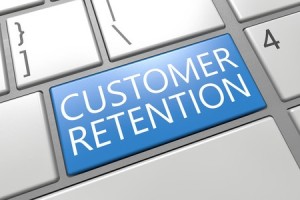
As many as 88 percent of consumers are researching items online and then buying in a physical store. To take advantage, your brand needs to be equipped with a digital marketing strategy that can put your products in front of the right users at the right time. A comprehensive digital marketing plan will help cut through the noise and boost your digital return on investment by driving sales to your offline business.
Use Data To Know Your Audience
Understanding the needs of your audience is the first step to creating a valuable digital marketing plan that can increase in-store sales. Analyzing trends in data can help determine the behaviors, interests, and demographics of audience segments. Collecting data from a variety of different sources such as search, social, customer relationship management (CRM) systems, and third parties, will provide insights into how users are finding and engaging with your brand today. By understanding how users behave, where they interact, and what content they find engaging, you can develop targeted campaigns and content that can maximize your return on investment.
Build Content Around Audience Segments
Developing personalized content is critical for increasing user engagement and visibility in organic search results. By producing frequent content, search engines will continuously crawl your site and users will remain involved in your brand. To turn engaged users into sales, create content that speaks to the needs of individual user segments and encourages them to move offline with clear calls to action. Content is more encompassing than written articles, so offer your fans different ways to stay connected through downloads, images, videos, are more. Encourage users to interact and share content to organically promote your brand and create buzz that can carry offline.
Target Customers And Amplify Content Through Advertising
Once you understand what your audience is looking for online, you can use paid advertising to increase your visibility and offline sales. Studies show that when searching for commercial goods, users are almost twice as likely to click a sponsored ad over organic content. The complete customization within digital ad management allows you to have significant control of your advertising results. Targeting allows individual segments of users to have specialized content shown at specific times, locations, and placements online. By leveraging these tools you can showcase unique product coupons to different segments or leverage geo-targeting to have your ads appear within a certain distance from your stores. The expansive options of ad placement available (search, social, mobile, retargeting, banner, and more) allow full control over distributing your ads exactly where your users are searching.
Rely On Authentic And Consistent Branding
You’ve no doubt spent a lot of time perfecting your brand and in-store experience, but does your online presence tell the same story? If your branding and content online does not reflect your offline image, your customers may be less engaged or disappointed if your in-store delivery falls short of expectations. Stay true to your brand and develop content that creates a sense of authenticity and engagement to keep customers interested and coming in for more.
Create And Nurture Advocacy
To create brand advocacy that expands beyond digital, get your fans involved. Integrate influencer outreach into your communications and feature your die-hard fans to keep them involved. Encourage and reward reviews to create user-made content and build advocacy that can increase engagement with your brand on and offline. Nurture that support by interacting with customers and exceeding expectations.
Expand Customer Relations To Drive Online Support
Customer support is no longer limited to store managers and call centers. Whether you’re involved or not, customers are discussing your brand online and therefore influencing the purchase decisions of others. Join the conversation by monitoring your social pages closely and responding to users who reaches out. Review sites are another opportunity to reward users who love your brand and solve the problems of those don’t. Remember that those users online are your real customers and can have a big influence on your sales offline.
Track Results And Optimize For Ongoing Success
Analyzing data helps measure the ROI of your online efforts. By looking at data from your search, social, and website campaigns, you can analyze which content is best at drawing engagement from users. To measure offline sales use unique coupon codes for specific products and locations. Using distinct codes allows you to track real return on investment from online ads to offline sales.
Conclusion
Offline sales are highly influenced by online activity, and a comprehensive digital marketing plan can help you drive online traffic back to your stores. Analyzing how your target segments behave allows you to create specialized content and promotions that generate leads by appealing to user interests. Build brand advocacy and increase your visibility online by remaining engaged and solving problems quickly. By staying active, interesting, and unique, your brand can increase online exposure that stimulates more in-store traffic.
Digital & Social Articles on Business 2 Community
(442)







